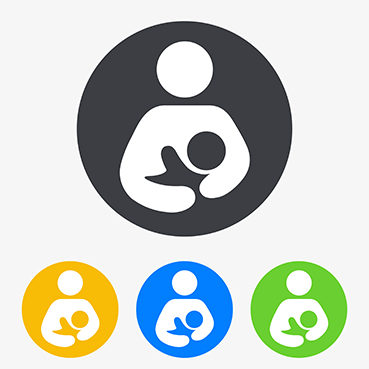What is the Fair Labor Standards Act (FLSA)?
The Fair Labor Standards Act (FLSA) establishes minimum standards that the majority of employers in the United States are required to follow. While it covers a wide range of topics related to employment, the primary topics are:
- Minimum Wage
- Overtime/maximum workweek
- Child labor
- Nursing mothers
- Workers with disabilities
The Wage and Hour Division (WHD) enforces the FLSA, and if employers do not comply, fines can range from $7,000 to $250,000, depending on the violation.
Current federal regulations require all employees earn a minimum of $7.25 an hour, but many states offer a higher minimum wage, and employers must know their state’s requirements. There is no limit to the number of hours that an employer can require an employee to work in a week. However, if an employee is working more than 40 hours in a workweek, they must be either be earning overtime (1 ½ times the regular rate of pay) or be exempt. Exemption is situational, and employers should never assume an employee is exempt. If an employee is exempt, FLSA requirements for minimum wage and maximum hours generally won’t apply to them. The FLSA offers fact sheets that cover exemption in more depth:
- Fact Sheet #17A: Exemption for Executive, Administrative, Professional, Computer & Outside Sales Employees Under the FLSA
- Fact Sheet #17G: Salary Basis Requirement and the Part 541 Exemptions Under the Fair Labor Standards Act (FLSA)
- Fact Sheet #17C: Exemption for Administrative Employees Under the Fair Labor Standards Act (FLSA)
- Fact Sheet #17D: Exemption for Professional Employees Under the Fair Labor Standards Act (FLSA)
There are additional exemptions, and if you believe an employee should be exempt, consult with the Department of Labor website, or your state labor office for additional assistance.
There are special protections and regulations provided to different groups of people under the FLSA. The most prominent groups are children, nursing mothers, and workers with disabilities. Children will typically need to be at least 14 to work, though there are exceptions for family businesses and other jobs like acting or casual babysitting. In addition, children under 18 cannot work in hazardous roles, as determined by the Secretary of Labor, and children under 16 are limited in the number of hours they can work.

Nursing mothers also receive special protection under the FLSA. In the first year after the birth of a child, a nursing mother must be provided with a reasonable time and space to pump or express milk. States may provide greater protections than the FLSA. For employers, it is critical to know that a nursing space is required. Although a dedicated space is not required, it must be an available and private space, and can never be a bathroom.

Individuals with disabilities can, in certain situations, be paid a subminimum wage. This wage is lower to account for lower production values of someone with a disability. It is important to note that this wage cannot be applied solely because the employee has a disability. The employer must confirm that the disability impacts the worker’s earning potential and production levels. Some examples of disabilities that may qualify include blindness, developmental disabilities, and drug addiction. In addition to ensuring the worker is truly impacted at work by their disability, the employer must also get a certificate from the Wage and Hour Division.
Who is Covered by FLSA?
There are 143 million workers in the United States that are covered by the FLSA. In order to be covered, there must be an employment relationship. Whether or not such a relationship exists is complex, and the U.S. Supreme Court has set a precedent that there is no single method for determination.

In addition to an employment relationship, enterprise or individual coverage must also be established. Businesses covered by the FLSA under enterprise:
- Have $500,000 or more in annual business or sales
- Medical facilities
- Educational organizations
- Government agencies
If not protected by enterprise, employees can also be covered under individual coverage. This covers anyone who works in interstate commerce or is a domestic worker. The FLSA offers a tool to assist employers in determining coverage, called the “eLaws – Fair Labor Standards Act Advisor.”
One area of coverage that causes confusion for both employees and employers is whether a worker is an employee or independent contractor. Again, while there is no single test or method to determine status, take a look at these common reasons for misclassification. Even if the employee:
- Gets a 1099
- Signs a contract
- Is paid in cash
- Receives cash “under the table”
- Works offsite
this does not guarantee that the employee is a contractor. If an employer is unsure how a worker is classified, they should reach out to their state department of labor.
Benefits of the FLSA for Employers

While it may seem as though the majority of benefits from the FLSA are for employees, the FLSA does benefit employers, especially those in competitive industries or with smaller businesses.
Primarily, the FLSA encourages free commerce, preventing businesses from undercutting others by underpaying and overworking employees. The FLSA also protects the health and long-term well-being of employees. While it may seem efficient and desirable to for employees to work long days in the short-term, their health would eventually suffer, and the employer would potentially lose a good employee.
The FLSA also provides clear guidelines to employers about what they are and are not required to provide. Under the FLSA, employers are not required to provide:
- Vacation or sick pay
- Meal or rest periods (many states do have different regulations)
- Pay raises and benefits
- Discharge notice or reason
However, employers need to be aware of any laws that are relevant in their state, as the laws may be different.
FLSA Training for Employees

While an employer may decide that their Human Resources department is responsible for overall company compliance with the FLSA and any related regulations, all employees should be aware of what is and isn’t protected.
By providing training to employees in their rights under the FLSA, employers can prevent confusion on coverage of breaks, vacation, and other voluntary benefits. Education can also help employees be their own advocates at work. For example, if an employee’s manager decides that they have to pump breast milk in the restroom, but the employee knows that company policy and the FLSA say differently, she can approach another supervisor or Human Resources before pursuing it through the Department of Labor, which could lead to significant fines.


